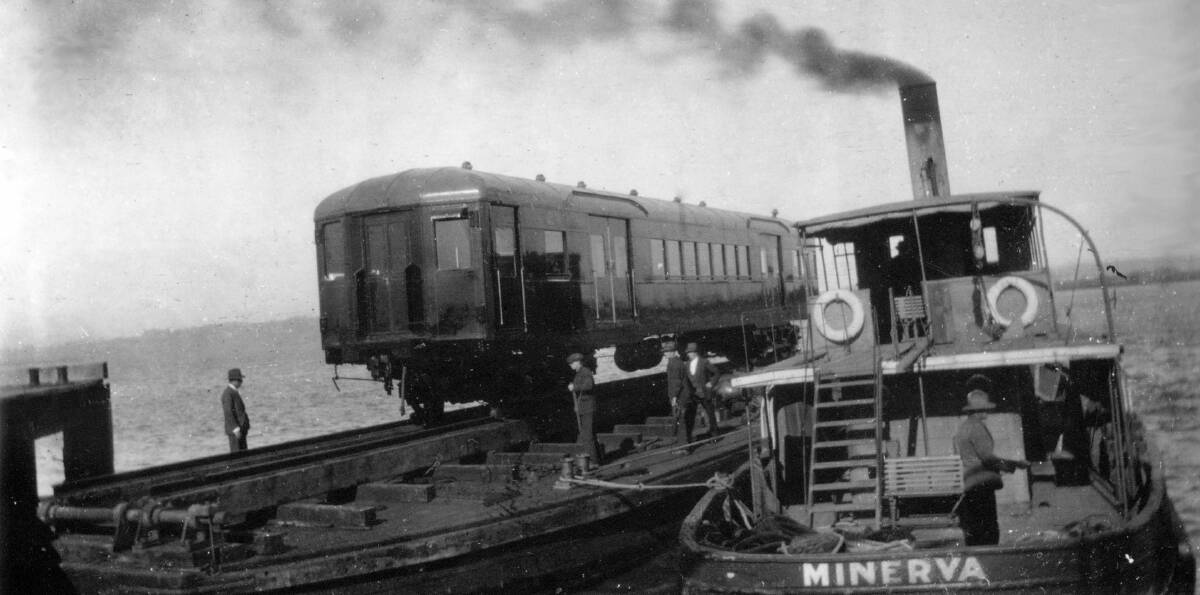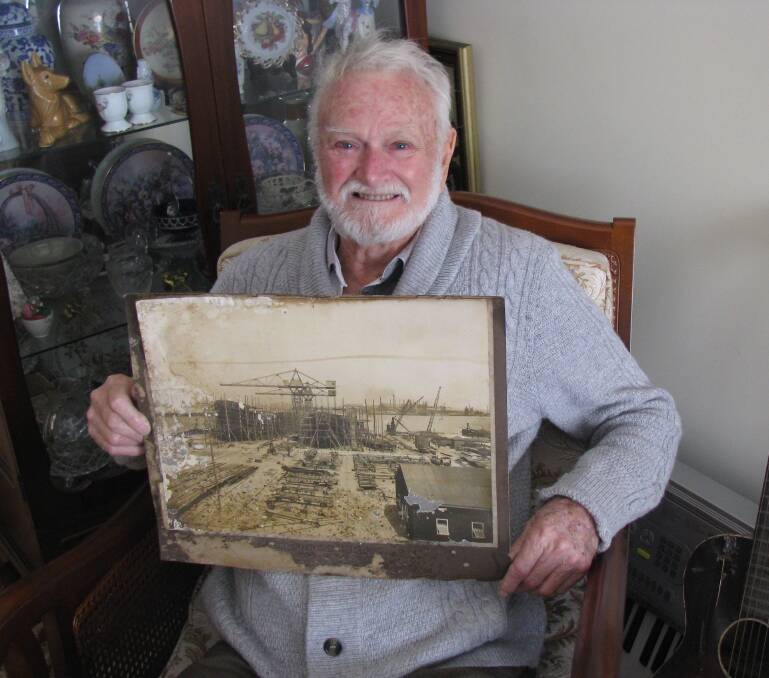
WELCOME to the lost world of Newcastle Harbour’s Walsh Island.
Subscribe now for unlimited access.
or signup to continue reading
Walsh Island no longer officially exists, of course, being one of seven islands gradually merged together for industrial use from 1951 to become known as Kooragang.
So, it’s hard to believe part of this former waterlogged land was Newcastle’s second largest employer back in the 1920s.
Back then, Walsh Island regularly employed up to 2500 tradesmen churning out ships and steel bridges and “red rattlers” (rail carriages) for the NSW Government.
Measuring about 1.7 kilometres long, the broad mud and sand spit of old Walsh Island pokes into the Hunter River opposite the old BHP site. Here, it neatly divides the north and south arms of the Hunter and today forms the eastern border of Kooragang Island.
The only hint of past glories is Walsh Reserve, the grassy, now fenced off southern tip of the former island and named after a resident public works engineer.
Meanwhile, the northern section of this modern industrial hub has been dominated by the giant concrete span of Stockton Bridge since 1971.
Walsh Island shipbuilders on this once vast, empty island had a busy time during a 19-year lifespan, manufacturing 47 vessels.
Also see
They ranged from dredges, ferries, steel punts, to three 5600 ton steamers, a pilot boat, wooden vessels and even a massive 15,000 ton floating dock for Newcastle.
The first big vehicular ferry, the SS Mildred, was also launched there in 1914 for the Stockton-Newcastle run.
From the early 1920s, the dockyard workforce diversified to survive. Besides rail bridges, workers produced buses, cast iron pipes, mine skips, railway rolling stock and steam road tractors..
But the dockyard was finally abandoned in 1933 doomed largely by it isolation, the heavy costs to transport everything across by water, lack of orders in the Great Depression and, finally, a lack of political support to keep it going.
One person today, however, who remembers the old Walsh Island dockyard well is retired Lake Macquarie engineer Duan (Don) Phillips, 91. It’s not hard to see why it holds such long memories for him.
Phillips was there between 1945 and 1950, helping his father and relatives dismantle all buildings until nothing was left to show that Walsh Island state dockyard and engineering works (1914-1933) had ever existed. Beside that, Phillips also almost lost his life there because of a workplace accident.
By the time the family team arrived on Walsh Island to work, some major buildings and heavy machinery had been shipped downriver between 1938-1941 and recycled on Dyke Point to start a new, easier-to-access State Dockyard which proved to be a vital ship repair asset in World War II.
Today’s story began when Phillips rang Weekender to say he had discovered among his late father’s possessions a rare but damaged, official photograph of the old Walsh Island dockyard, possibly in the 1920s.
“Beyond the shipbuilding slips dwarfing the workmen shown in the picture you can see the early BHP site behind. But I can’t see any blast furnaces,” Phillips said later.

He said his father E.J. ‘Jack’ Phillips, a veteran from two world wars, had been night watchman on the island which led to him getting the demolition contract for the remaining buildings there.
“It took quite some time, up to 1950. There was dad and us four boys, plus a couple of cousins and uncles,” Phillips said.
“You’d come home black from work with the dust in the ceilings, from BHP, I suppose.”
Not being professional demolishers, the family task took years, but there were perks.
“In the mangroves fringing the island’s edge, especially on the northern end, we used to catch large mud crabs there,” he recalled.
“They had claws as big as your fist.
“There were lots of buildings, offices, the pattern shop, the boilermakers’ shop etc. for us to demolish. It was all Oregon timber. Beautiful timber with roofs and walls made of corrugated iron.
“I felt the island manager’s house (on Walsh Point) was a mansion with about five bedrooms and bathrooms and a tennis court. Everything went.
“We sold it all, floated it over to Carrington. In those days there was a shortage of building materials,” he said.
“The manager’s house hadn’t even been vandalised. It was hard to get access to the island, but I suppose once we were there, others also came and there was a bit of thieving from us, like brass taps and the like.
“One other thing about Walsh Island was that it was full of wild, stray cats. People must been rowing over to dump them there,” Phillips said.
“Nearby was a place called ‘Rotten Row’ old where abandoned ships were run ashore. We borrowed a lifeboat there one time to row some roof slates across the water to wharves opposite, but the boat sank,” he said.
“The dry planks had opened up to let the water in. It wasn’t far from shore so we waded in to recover the slates. Later the boat timbers swelled and up it came again.”
He also said that contrary to the ‘proof’ of a re-touched, historic aerial picture of Walsh Island, he never saw any evidence that an island airfield existed.
Earlier, in 1942, a Japanese submarine out at sea had fired numerous shells, apparently towards BHP. A Japanese report later said they were really trying to hit the old floating dock still thought to be moored at Walsh Island.
“Our family were living then at The Avenue, Islington, and heard the shells whizzing overhead. We raced to get inside the air-raid shelter in our backyard, but it was full of water and vermin,” Phillips said.
“Mum said we’d be safer in the house.”
And in January 1949, while working about 14metres (45ft) up on the roof of the dockyard’s pattern shop, disaster struck.
“I dropped to the ground, shattering all my ribs and an arm. The accident happened at 9am, but I didn’t get to Newcastle hospital until after noon. I could hardly breathe.
“Anyway, they parked my trolley at the hospital next to the morgue. I guess they must have given me up for dead.
“One doctor checked me out and went away shaking his head. Later, another doctor, doing my paperwork checked me over. I opened my eyes and he said, surprised: ‘You still with us?’ ‘On my second life’, I joked.”
Phillips later went on to fly small, fixed wing aircraft as a hobby. Then, without ever riding in a helicopter, he decided to make his own two-seater version, call it the Phillicopter and sell it commercially overseas.
But that’s a story for another day.

